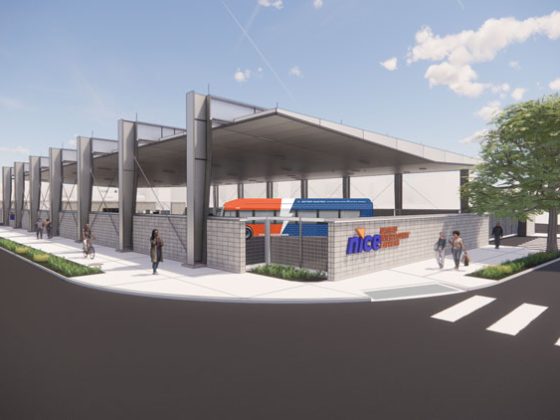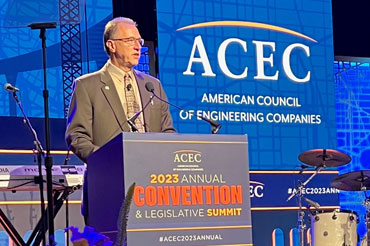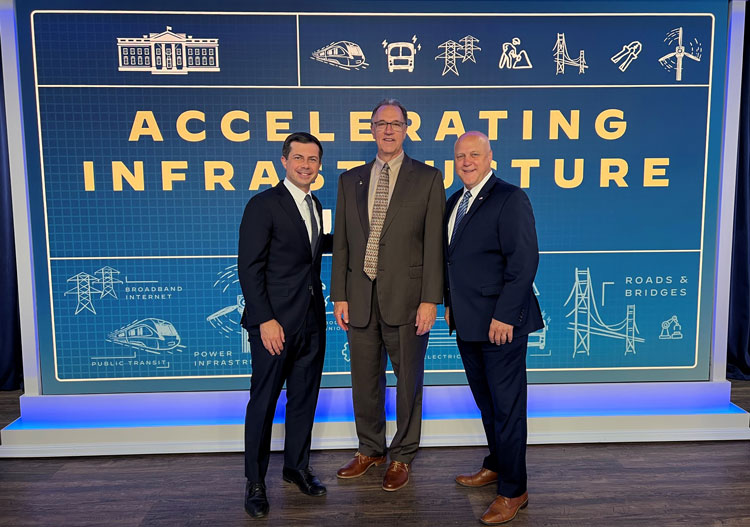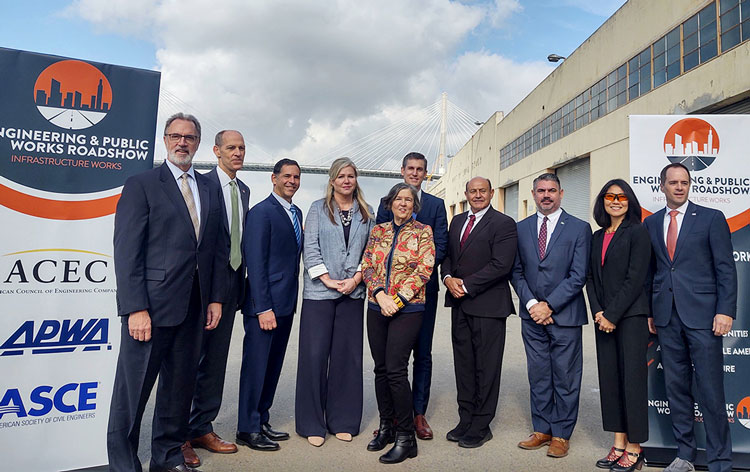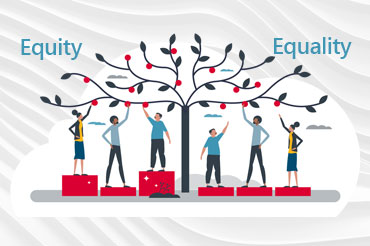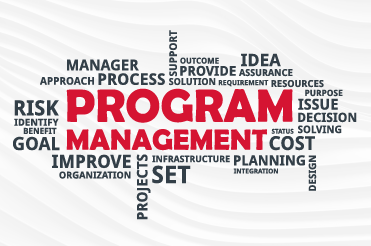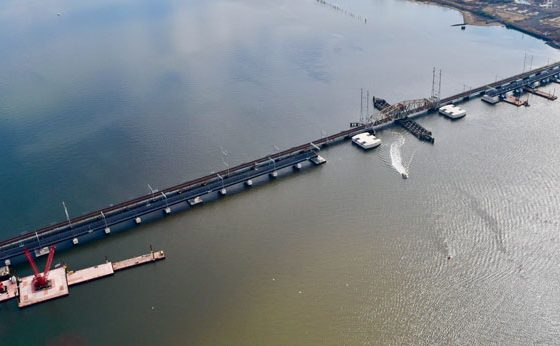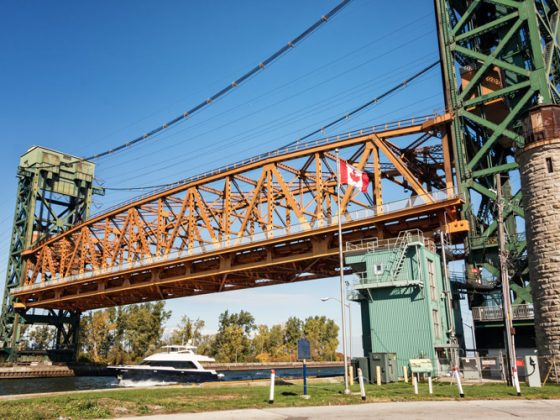Barrett On His Tenure as American Council of Engineering Companies (ACEC) Chair
Art Barrett, PE
On May 22, 2022, Art Barrett began his tenure as chair of the American Council of Engineering Companies (ACEC) at their annual Spring Convention and Legislative Summit. As a 40-year veteran of the architecture, engineering, and construction (AEC) industry, Art brought his vast knowledge and experience to the role, stewarding the organization through challenges and successes while meeting with thousands of professional organization members and key local and national government officials.
The end of Art’s term offers a unique opportunity to reflect on his time as ACEC chair, what the organization accomplished during his tenure, and what opportunities are available for advancing the engineering industry.
Here’s what Art has to say:
What can we expect from the future of the AEC industry?
I believe the future of engineering in the built environment looks strong. Significant infrastructure development is advancing with the Infrastructure Investment and Jobs Act (IIJA) and Inflation Reduction Act (IRA). The development of private sector markets continues to outpace the spending of government agencies.
Opportunities to advance emerging technologies, such as artificial intelligence (AI), will impact our businesses, but I believe it will positively enhance our work. Engineering firms will need to be nimble as shifts in the industry will affect how our firms serve our clients and public wellbeing.
Our professional obligation is to continue addressing environmental, social, and governance considerations with evolving regulations. We can address decarbonization, particularly in the buildings space, where structures can last 100+ years. That lifecycle must consider both embodied and operational carbon footprints. Mechanical and electrical engineers can ensure buildings and other infrastructure projects get it right to provide a sustainable future.
Another example of ACEC looking to the future is its Energy Committee, which is driving the industry’s energy agenda through governmental advocacy, thought leadership, and energy market programs. Finally, the organization has launched a Technology Committee to help the industry incorporate evolving technologies into our business operations and models to enhance our value proposition.
How is the AEC industry talent pipeline projected to grow?
The future of our industry lies with our people. I met with various ACEC state leadership classes and emphasized succession planning in our firms while growing the skills of talented professionals in the industry. These meetings recognized all of the critical positions in the industry, including:
- Administration.
- Project managers.
- Surveyors.
- Designers.
- Engineers.
- Scientists.
As the only association in the built environment focused on the business of engineering, ACEC can bring value by attracting and developing professionals in the AEC talent pipeline. Examples include the College of Fellows, which engages engineering leaders through recognition programs, outreach through scholarship, and unique educational opportunities.
Our Diversity, Equity, Inclusion, and Belonging (DEI&B) Committee engages professional societies by developing programming, advocacy, and resources. It leverages our combined efforts and advances ACEC’s DEI&B mission and goals. During my tenure, we partnered with diverse engineering groups and developed a Women in Leadership Forum.
Additionally, the industry faces a continued need for more engineers. An estimated 82,000 additional engineers are needed to continue the work from the IIJA. ACEC recommends reforms to the H1-B visa and other federal workforce-related programs to enable firms to attract and retain more skilled professionals. During my term, we also identified a partnership with the 50K Coalition, a collaborative group of more than 40 engineering organizations focused on producing 50,000 diverse engineering graduates annually by 2025.
How do we advance and complete important infrastructure projects?
The AEC industry helps deliver great infrastructure that improves our communities, and in doing so, we partner with a broad array of outside organizations, including agency and private sector clients, labor and the interest groups, and technology firms, to name a few.
At ACEC, we partnered with the American Public Works Association (APWA) and American Society of Civil Engineers (ASCE) on a public awareness effort to highlight the transformational work of engineers and public works professionals called The Infrastructure Works: Engineering and Public Works Roadshow. The program aimed to heighten public attention on industry projects that improve climate resiliency, promote energy efficiency, and open access to mobility.

How has the ACEC PAC evolved?
ACEC’s Political Action Committee (ACEC/PAC) is the largest engineering PAC in the AEC industry and has become the primary tool for political engagement at the national level. The PAC saw a 10.92% increase in 2022 over 2021. All engineers should understand and consider PAC participation to develop a more unified industry voice.
How can we strengthen ACEC member organizations?
ACEC is a federation of 51 state and metropolitan member organizations (MO). Each MO focuses on advocacy, educational resources, and award programs tailored to each state’s unique needs. We worked on strengthening the MO partnership with ACEC. I attended award programs and state conferences to engage on the ground floor, looking for challenges and opportunities, regardless of size.
ACEC Advocacy Efforts
Through several partner organizations and initiatives, ACEC has provided guidance and resources to several issues that affect the industry, including:
QBS
Qualifications-based selection (QBS) is the procurement process required by the federal government and most state governments for the acquisition of engineering services, where firms are selected based on experience and technical expertise rather than the lowest cost bid. Advocating for QBS is a priority for ACEC, which is committed to collaborating with public agencies to ensure professional procurement laws benefit both clients and taxpayers.
Minuteman Fund
The Minuteman Fund is ACEC’s legal/legislative program for litigation impacting our industry and state advocacy issues. As ACEC chair, I focused on aiding smaller state MOs (that may not have the resources of their large state counterparts) to protect and advance their issues.
Indemnification & Duty to Defend
Broad-form indemnification and the duty to defend are critical issues for firms undertaking professional service contracts. Each poses a significant risk and could result in unfair damages. These unfair standards mandate engineering firms must defend clients regardless of negligence without specifying contract language that firms could reject. ACEC has devoted Minuteman Funds to encourage states to make broad-form indemnification and the duty to defend void and unenforceable engineering contracts.
Licensure
We’ve seen a rise in state legislatures pushing against PE licensure, which ultimately affects public health, safety, and welfare. ACEC is working to uphold the testing and experience requirements needed to obtain professional engineering licensure.
Grassroots Voice
ACEC’s nearly 6,000 member firms employ 600,000 persons across the U.S. We represent a significant voice to state and federal legislators and use that voice to advocate for firms and the engineering profession. By educating ourselves and supporting engagement in legislative alerts issued by ACEC, we can respond to legislators with positions that benefit our industry and communities.
Final Thoughts
I’d like to thank everyone at Gannett Fleming for their support and encouragement during my time as ACEC chair. Seeing our firm’s commitment to the organization and advocating for our industry is rewarding. Gannett Fleming is highly involved in ACEC’s mission and vision for a thriving AEC industry that benefits society, from our committed professionals who volunteer on MO and national committees to our award-winning project submissions.
I encourage AEC professionals to join ACEC’s mission. You can sign up for email newsletters and voice your concerns for the AEC industry by becoming a member.
Featured News & INSIGHTS
Featured Projects

MassDOT Variable Message Sign Replacement and Upgrade
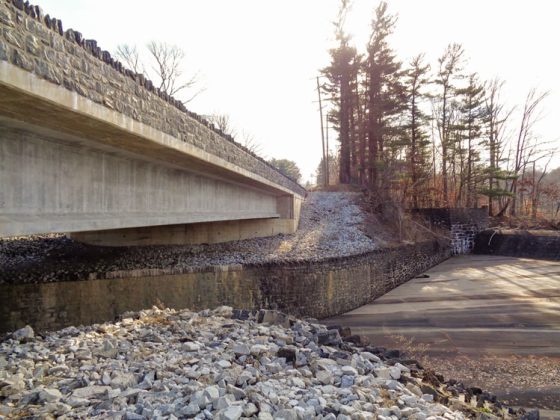
Route 252 Springton Reservoir Dam Spillway Bridge Improvements
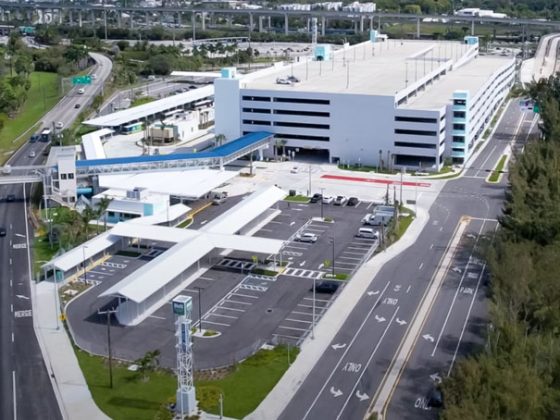
Golden Glades Multimodal Transportation Facility
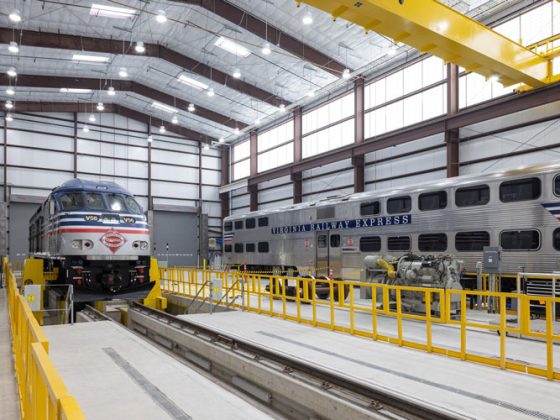
Virginia Railway Express Lifecycle Overhaul and Upgrade Facility
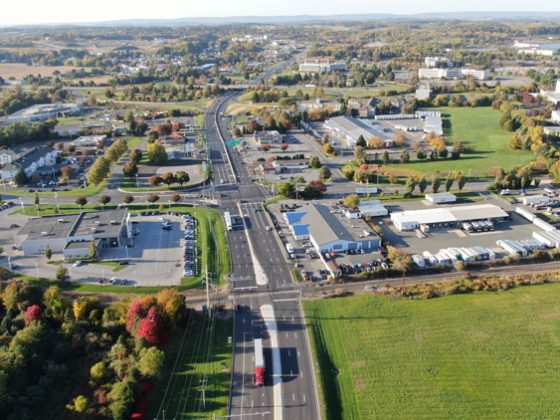
Lehigh Valley SR 0100 Roadway Reconstruction

Pittsburgh Regional Transit South Hills Village Rail Center Design

Scarborough Subway Extension & Yonge North Subway Extension Projects
